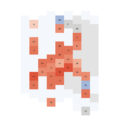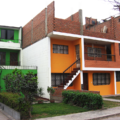As part of my work in Paisaje Transversal, I have been working on the development of Local Urban Agendas in different medium size cities in Catalonia, including Esparreguera, Manresa and Cervelló, using the methodology developed by the company and based in the Spanish Urban Agenda. The Spanish Urban Agenda is a strategic document that, aligned […]
The cross-fertilisation of cohesion policy and spatial planning policy brief was a spin-off work of the COMPASS research project (2018), commissioned by ESPON EU. The objective of the project was to provide an authoritative comparative report on changes in territorial governance and spatial planning systems in Europe from 2000 to 2016. Findings for 32 countries […]
CENTRINNO is a research project focused on industrial historical sites under transformation. It will showcase the potential of these cultural landscapes to become new and inclusive hubs of entrepreneurship, manufacturing and innovation for city residents and small producers while fostering sustainability and social inclusion. The project is funded by the EU H2020 program and is […]
Reflow is a research project that seeks to understand and transform urban material flows, co-create and test regenerative solutions at business, governance, and citizen levels to create a resilient circular economy. Funded by EU H2020, the project involves 27 European partners. Diverse approaches to circularity are tested in six pilot cities across Europe focusing on […]
Lima experienced an explosive population growth during the last century. Its population went from 600 thousand people in 1940 to nearly 9.5 million people nowadays. Former agriculture fields between the coast and the beginning of the Andes mountains were quickly filled with urban developments. Neither the public sector nor the private housing market provided decent […]
Housing; self-built; urban policies; Latin America; PREVI; Favela Bairro; Quinta Monroy Article published in Atlantis magazine #28.4, student magazine of the urbanism department at TU Delft University Latin America is today the most heavily urbanized region in the world (UN Habitat, 2016). Centralization of services, economic and political crises, conflicts and violence, among other reasons, […]





